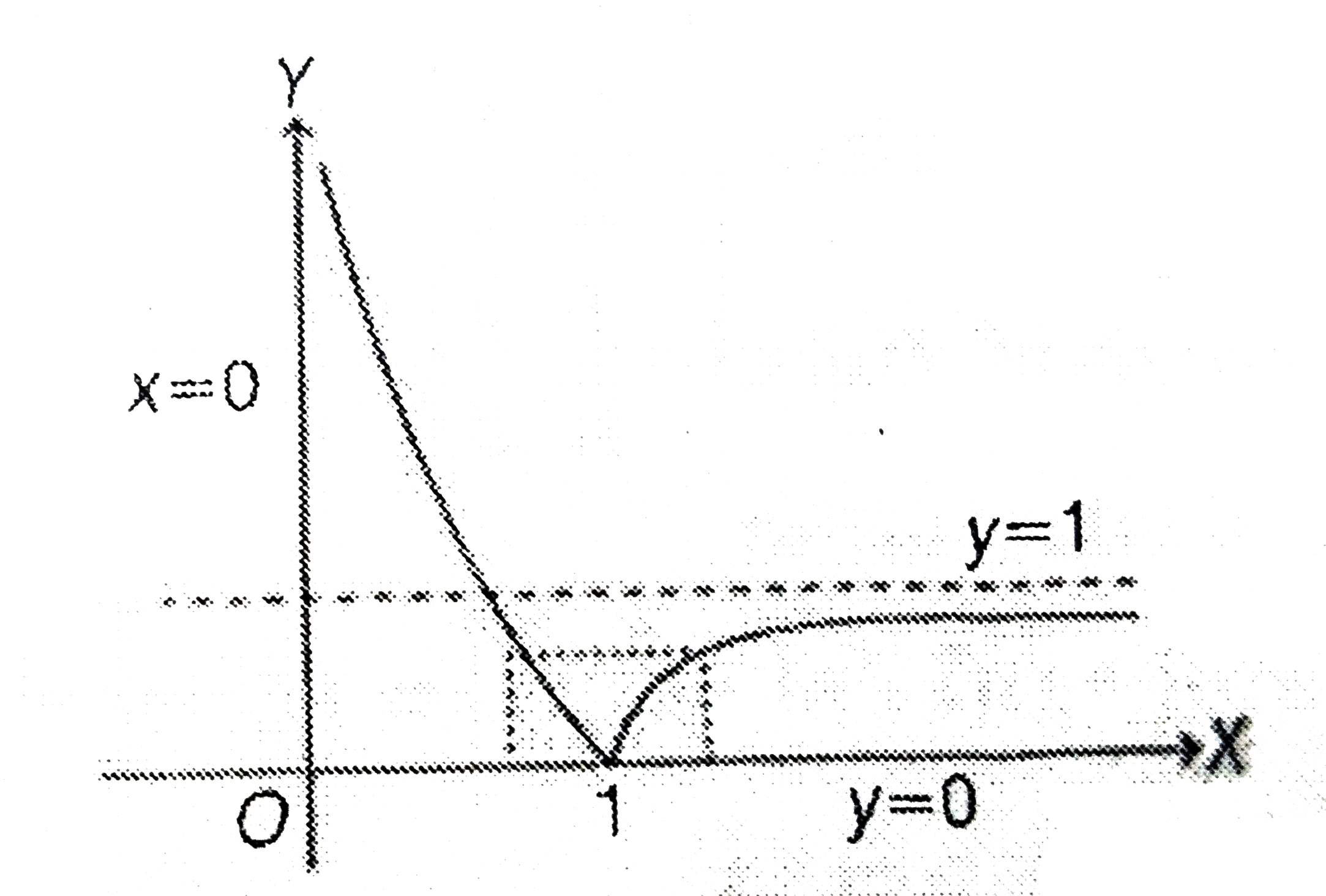Find the derivative of y=log26x.Solution in Tamil
A
injective only
B
both injective as well as surjective
C
not injective but it is surjective
D
neither injective nor surjective
Video Solution
Text Solution
The correct Answer is:D
We have, f(x)=|x−1|x=⎧⎨⎩−(x−1)x, if 0<x≤1x−1x, if x>1
={1x−1, if 0<x≤11−1x, if x>1
Now, let us draw the graph of y=f(x)
Note that when x→0, then f(x)→∞, when x=1, then f(x) = 0, and when x→∞, then f(x)→1

Clearly, f(x) is not injective because if f(x)<1, then f is many one, as shown in figure.
Also, f(x) is not surjective because range of f(x) is [0,∞] and but in problem co-domain is (0,∞), which is wrong.
∴f(x) is neither injective nor surjective
|
Similar Questions
Find the derivative of the function y =f(x) using the derivative of the inverse function x=f−1 (y) in the following: y=log2(x2)
View SolutionIf log2(log2(log3x))=log2(log3(log2y))=0, then the value of (x+y) is
View SolutionIF y=log2log2(x) then dydx is equal to
View SolutionEvaluate each of the following in terms of x and y, if it is given x=log32 and y=log52.
log4.52
View SolutionEvaluate each of the following in terms of x and y, if it is given x=log32 and y=log52.
log902
View SolutionFind the second derivative of (iii) y = e^(6x) cos 3x
View Solutionlet y=sqrt(log_2(3)log_2(12)log_2(48)log_2(192)+16)-log_2(12)log_2(48)+10 find y in N
View Solution
